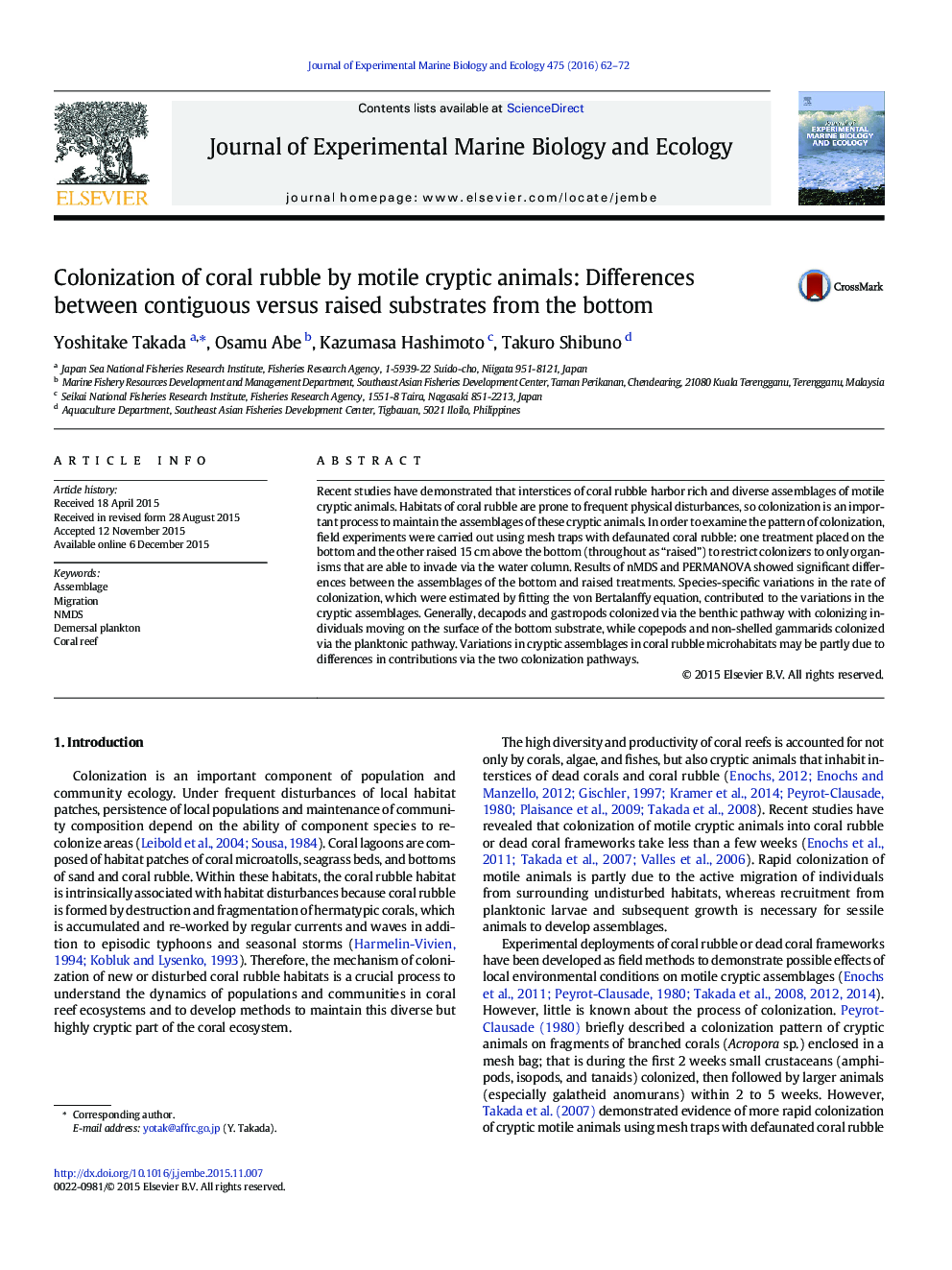| Article ID | Journal | Published Year | Pages | File Type |
|---|---|---|---|---|
| 4395280 | Journal of Experimental Marine Biology and Ecology | 2016 | 11 Pages |
•Motile cryptic animals colonize to coral rubble via planktonic and benthic pathways.•Cryptic assemblages were different between bottom and raised traps with coral rubble.•Species specific colonization rates were estimated.•Involvement of the two colonization pathways contributes to assemblage variations.
Recent studies have demonstrated that interstices of coral rubble harbor rich and diverse assemblages of motile cryptic animals. Habitats of coral rubble are prone to frequent physical disturbances, so colonization is an important process to maintain the assemblages of these cryptic animals. In order to examine the pattern of colonization, field experiments were carried out using mesh traps with defaunated coral rubble: one treatment placed on the bottom and the other raised 15 cm above the bottom (throughout as “raised”) to restrict colonizers to only organisms that are able to invade via the water column. Results of nMDS and PERMANOVA showed significant differences between the assemblages of the bottom and raised treatments. Species-specific variations in the rate of colonization, which were estimated by fitting the von Bertalanffy equation, contributed to the variations in the cryptic assemblages. Generally, decapods and gastropods colonized via the benthic pathway with colonizing individuals moving on the surface of the bottom substrate, while copepods and non-shelled gammarids colonized via the planktonic pathway. Variations in cryptic assemblages in coral rubble microhabitats may be partly due to differences in contributions via the two colonization pathways.
